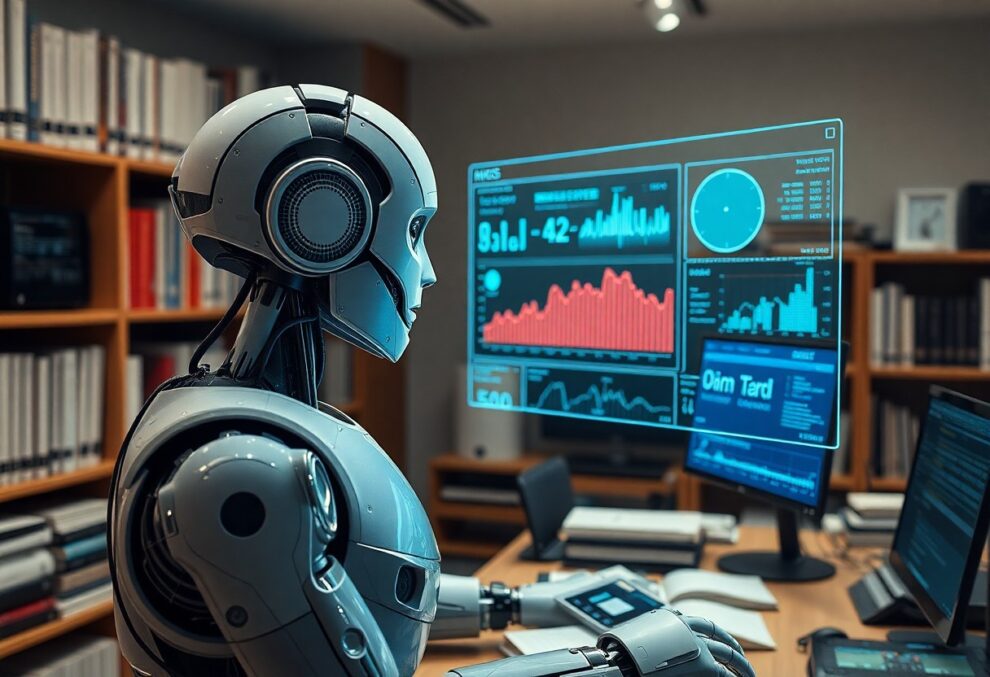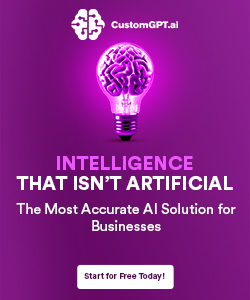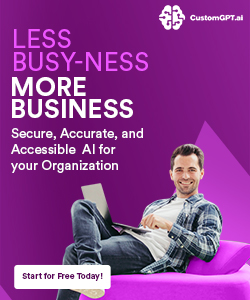Most people are becoming increasingly aware of the role artificial intelligence plays in our daily lives, yet few understand how these machines actually learn and evolve. As you research into the world of AI learning, you’ll discover how machines enhance their performance through experience and data, ultimately transforming various industries and your own interactions with technology. This post will explore the mechanics behind AI learning, the implications it has for your life, and what it means for the future of innovation.
Understanding AI Learning
Before exploring artificial intelligence, it’s imperative to grasp how it learns and evolves through repeated exposure to data patterns and experiences. This knowledge allows you to appreciate the complexities of AI and the implications of its rapid development in your everyday life.
Types of Machine Learning
- Supervised Learning: Trains on labeled data.
- Unsupervised Learning: Finds patterns in unlabeled data.
- Reinforcement Learning: Learns through trial and error.
- Deep Learning: Mimics human brain structure with neural networks.
- Transfer Learning: Applies previous knowledge to new tasks.
Beside types, it’s important to recognize that each variation of machine learning employs a distinct methodology, allowing systems to adapt and improve their functionality. Perceiving these differences enables you to understand which approach best suits various applications.
The Role of Data in AI
Learning in AI heavily relies on data, as it serves as the foundation for model training and decision-making. The variety, quality, and volume of data directly influence how effectively AI can learn patterns and make predictions.
Understanding the role of data in AI equips you with the insights to comprehend the dependency of machine learning systems on data. Quality datasets not only enhance performance but also minimize bias, which could adversely affect outcomes. Awareness of this relationship between data and AI enables you to critically assess AI solutions in your own environment.
The Process of Learning in Machines
Clearly, the learning process in machines involves algorithms that enable them to analyze data and improve their performance over time. This iterative process allows machines to gain insights from their experiences, similar to how humans learn from past actions. By training on diverse datasets, machines can refine their decision-making capabilities, drawing patterns and making predictions that enhance their effectiveness in various applications. Understanding this learning process is imperative for leveraging AI in your own work and interactions.
Supervised Learning
One of the primary methods of machine learning is supervised learning, where you provide the algorithm with labeled datasets. In this case, input data is paired with the correct output, allowing the machine to learn from examples. This type of learning is widely used in applications such as image recognition and natural language processing, where the machine requires guidance to make accurate predictions.
Unsupervised Learning
Before diving deeper into machine learning, it’s imperative to understand unsupervised learning, where algorithms work with unlabeled data. In this approach, the machine identifies patterns and structures within the data without human guidance. This method is particularly useful for clustering similar data points or reducing dimensionality, enabling you to uncover hidden insights and relationships that may not have been immediately apparent.
With unsupervised learning, your machine can autonomously discover different segments and anomalies within datasets, paving the way for valuable insights. For instance, it can reveal customer segments in marketing data, which can help you tailor your strategies. By harnessing this technique, you open doors to innovative applications in fields like data mining, recommendation systems, and more, ultimately enhancing your decision-making processes.

The Impact of AI Learning on Industries
Any organization embracing AI learning is witnessing significant transformations across various sectors. Industries are redefining their operations, enhancing efficiency, and driving innovation by leveraging intelligent systems that learn from experiences. This shift towards AI not only optimizes productivity but also reshapes the workforce, compelling you to reconsider traditional roles and skill sets to stay competitive in the evolving landscape.
Healthcare Innovations
Across the healthcare sector, AI learning is driving groundbreaking advancements. From predictive analytics that improve patient outcomes to machine learning algorithms that assist in diagnosis, these innovations are enhancing the quality of care you receive. The ability of AI to analyze vast amounts of data quickly transforms treatment plans and enables healthcare providers to make informed decisions, ultimately benefiting both patients and practitioners.
Transformations in Business Operations
Before AI learning, many business operations relied heavily on manual processes and decision-making. The introduction of smart algorithms and data analysis tools is reshaping how businesses function, allowing you to streamline workflows. This change is leading to improved accuracy and faster turnaround times, empowering you to make data-driven decisions and strategically align your resources for optimal performance.
In fact, by integrating AI learning into your business operations, you enhance efficiency and reduce costs. Automated systems can handle repetitive tasks, freeing up your team to focus on higher-value activities. Real-time data insights enable you to anticipate market trends and address customer needs more effectively. This transformation not only supports growth but also strengthens your competitive edge in today’s fast-paced environment.
Ethical Considerations in AI Learning
To ensure a responsible development of AI systems, it is vital to address the ethical considerations that arise during the learning process. As machines become more advanced, the implications of their learning methods impact not only how they operate but also how they interact with humans. Navigating these issues is imperative for fostering public trust and ensuring that technology is used for the benefit of all.
Bias and Fairness
An effective AI system must prioritize fairness to prevent perpetuating societal biases. When data used in training is skewed or unrepresentative, the outcomes can reflect and amplify these disparities. As you engage with AI technologies, it is important to advocate for fairness, ensuring that the systems treat everyone equitably while reducing harmful biases.
Transparency and Accountability
With the increasing complexity of AI models, transparency about their decision-making processes becomes vital. You may find yourself questioning how and why certain outputs are generated. Clear communication about the functionality and limitations of AI can empower users, fostering a sense of trust and responsibility in how these systems are utilized.
Considering the growing role of AI in everyday decision-making, it is vital for developers and organizations to embrace transparency and accountability actively. By openly sharing information about algorithms and the data driving them, you can better understand their potential and limitations. This awareness builds a foundation for responsible AI deployment and encourages a culture of ethical standards, promoting public confidence in the technology.
The Future of AI and Human Collaboration
After years of development, the future of AI will hinge on how effectively you and machines can work together. As AI technology evolves, you will see a shift in roles where collaboration becomes important. The goal is to create a symbiotic relationship that enhances decision-making and productivity, leading to solutions that neither humans nor machines could achieve alone.
Enhancing Human Capabilities
Below the surface of everyday tasks, AI is designed to augment your abilities, allowing you to focus on higher-order thinking. This enhancement may include streamlining repetitive processes, providing data-driven insights, and enabling more effective collaboration across teams and disciplines. The result is a working environment that maximizes your potential while minimizing routine burdens.
Challenges Ahead
Capabilities must be aligned with ethical guidelines and societal norms as you navigate the complexities of AI integration. The trust that you place in systems can be jeopardized by issues like bias, privacy, and security concerns. Addressing these challenges will be important for ensuring a cooperative, productive future.
At the forefront of AI’s integration into your daily life are the challenges that both you and organizations must confront. Questions about accountability arise when machines assist in decision-making, while disparities in access to technology may widen existing gaps. As you explore these issues, it will be vital to advocate for equitable and transparent AI practices that serve everyone’s interests, paving the way for responsible collaboration between humans and machines.
Implications for Society
Keep in mind that as AI technology continues to evolve, it will reshape various aspects of society, influencing everything from daily life to economic structures. The integration of AI into different sectors can lead to significant changes in how you interact with technology, transform industries, and impact social dynamics. Understanding these implications is vital for navigating the future as both individuals and communities.
Job Market Changes
With AI increasingly automating tasks, the job market is undergoing significant transformations. Many routine jobs may become obsolete, while new opportunities in AI development, data analysis, and technology management will emerge. You may need to adapt your skill set to remain competitive in a landscape that values digital literacy and technical proficiency.
Educating the Next Generation
About the future of work, the education system will play a pivotal role in preparing your children for a world where AI is integral. Curricula will need to incorporate skills such as critical thinking, creativity, and digital literacy, ensuring that students are well-equipped to thrive in an AI-driven economy.
Even as the education system evolves, fostering a culture of lifelong learning will become crucial. You should encourage curiosity and adaptability in young learners, helping them to embrace challenges and explore diverse fields. By prioritizing interdisciplinary studies that combine technology with the arts and social sciences, you can ensure that future generations possess a well-rounded skill set, ready to tackle the opportunities and challenges that AI presents.
Conclusion
Summing up, as you explore AI learning, you’ll realize that machines are continuously improving through their experiences, transforming how they interact with the world and enhancing their capabilities. This evolution not only paves the way for more efficient processes and services but also raises important ethical and societal questions that you should consider. Embracing this change means staying informed and engaged with the implications of AI in your life, ensuring that you are equipped to navigate a future shaped by intelligent machines.
Q: What is AI learning and how does it work?
A: AI learning involves the use of algorithms and models that enable machines to process data and improve their performance on tasks over time. It generally occurs through methods such as supervised learning, where models are trained on labeled data, unsupervised learning, where patterns are uncovered in unstructured data, and reinforcement learning, where agents learn to make decisions through trial and error. As these systems are trained on more data, they become better at recognizing patterns, making predictions, and adapting to new information.
Q: What are the implications of machines that improve through experience?
A: When machines are capable of improving through experience, it means they can operate more autonomously and adaptively in various environments. This has significant implications across industries, such as healthcare, where AI can enhance diagnostic accuracy, and transportation, where automated vehicles can learn to navigate safely. The continuous improvement of AI systems also raises questions regarding accountability and transparency, as decisions made by machines become increasingly complex and sometimes difficult to interpret.
Q: What role does data play in AI learning?
A: Data is a fundamental component of AI learning; it serves as the foundation on which models are trained and improved. High-quality, diverse datasets allow AI systems to recognize patterns and make informed predictions. The quantity of data also matters, as larger datasets often lead to better performance, enabling the AI to learn from a variety of scenarios. However, it is necessary to ensure that data is relevant, accurate, and ethically sourced to avoid biased outcomes in AI applications.










